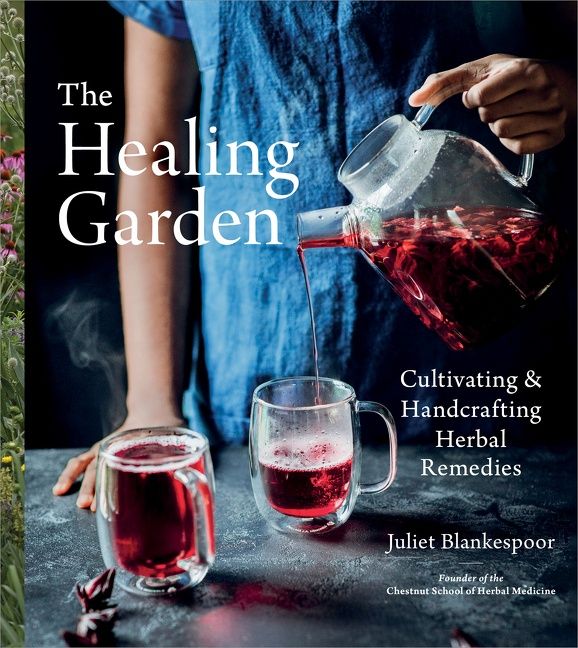
Cultivating & Handcrafting Herbal Remedies”
By Juliet Blankespoor
HarperCollins Publishers, 2022
448 pages, hardcover, $30
Juliet Blankespoor first made a name for herself within the herbal community in founding the Chestnut School of Herbal Medicine in Asheville, North Carolina, a formerly in-person school that now exists fully online. She wrote a multifarious blog for many years, but “The Healing Garden: Cultivating & Handcrafting Herbal Remedies” is her first book. This 400-plus page tome covers everything you’d want to know when growing your own herbal medicine. It delighted me with its creative recipes and impressed me with its depth of information.
“The Healing Garden” starts off with a nice biography section that gives insight into Blankespoor’s journey with plants and offers recognition to her teachers. From there the book is broken into three easy to navigate sections on cultivating medicine, making medicine, and botanical medicine. She assures readers that gardening is a skill anyone can pick up and, under this book’s guidance, I am apt to encourage others to believe her!
A whole chapter in the cultivating medicine section is dedicated to soil, and the chapter titled “Holistic Solutions for Plant Diseases and Problematic Insects”focuses on “preventative garden practices” such as building healthy soil, mulching, rotating crops, planting for diversity, companion planting and more. This preventative approach is one many herbalists take in regard to their own health so it is no surprise it is applied to the garden as well. This section provides great charts for quick gardening reference. The “Herbal Habitats” chart helps you understand the best herbs to grow in your climate, and the “Herb Propagation Chart” shows exactly how to do so. City growers and those with little space take heart, there is even a chapter on growing herbs in containers.
Even if you don’t plan to grow your own herbs, the medicine making section of this book makes it a worthwhile addition to any herbalist’s library. It includes photos along with directions for how to make a tincture as well as infusions, decoctions, syrups, oils, salves and poultices. Basically, she covers everything you would want to make to build your own home apothecary.
Simple yet tasty recipes are dispersed throughout: a favorite staple is an herbal immunity broth concentrate. Additional recipes range from culinary recipes, like lavender-lemon bundt cake, to more medicinal ones such as a menstrual cramp formula.
If you are looking for a materia medica, you’ll find it in the botanical medicine section of the book, which includes an alphabetical list of herbs with information on how to cultivate them, medicinal properties and preparations. Dosage information (often hard to come by in herbal books) and medicinal uses are broken down by the body’s systems making for easy reference when dealing with a specific aliment. “The Healing Garden” does a spectacular job of mentioning precautions for specific plants and has four pages dedicated to herbal safety, giving great reminders for herbal practitioners and beginners alike.
Blankespoor’s coverage of tulsi is a great example of the depth and breadth of information included in the book. While many herbal books cover tulsi, Blankespoor talks about the different varieties, gives extensive cultivation information and provides three recipes for people to engage with the plant: a tincture formula “for rejuvenation,” a tea recipe “for despair and despondency,” and a “Basilicious Benediction Pesto” recipe.
When growing medicinal herbs, she says, “You’ll be rewarded with the sweetest bounty: empowerment, plant friendships, a beautiful garden, greater health and a cabinet full of potent medicine.” This book definitely guides its readers in making that reward a reality!
Denise DeSpirito, Of the Spirit Herbals, Owls Head, Maine
